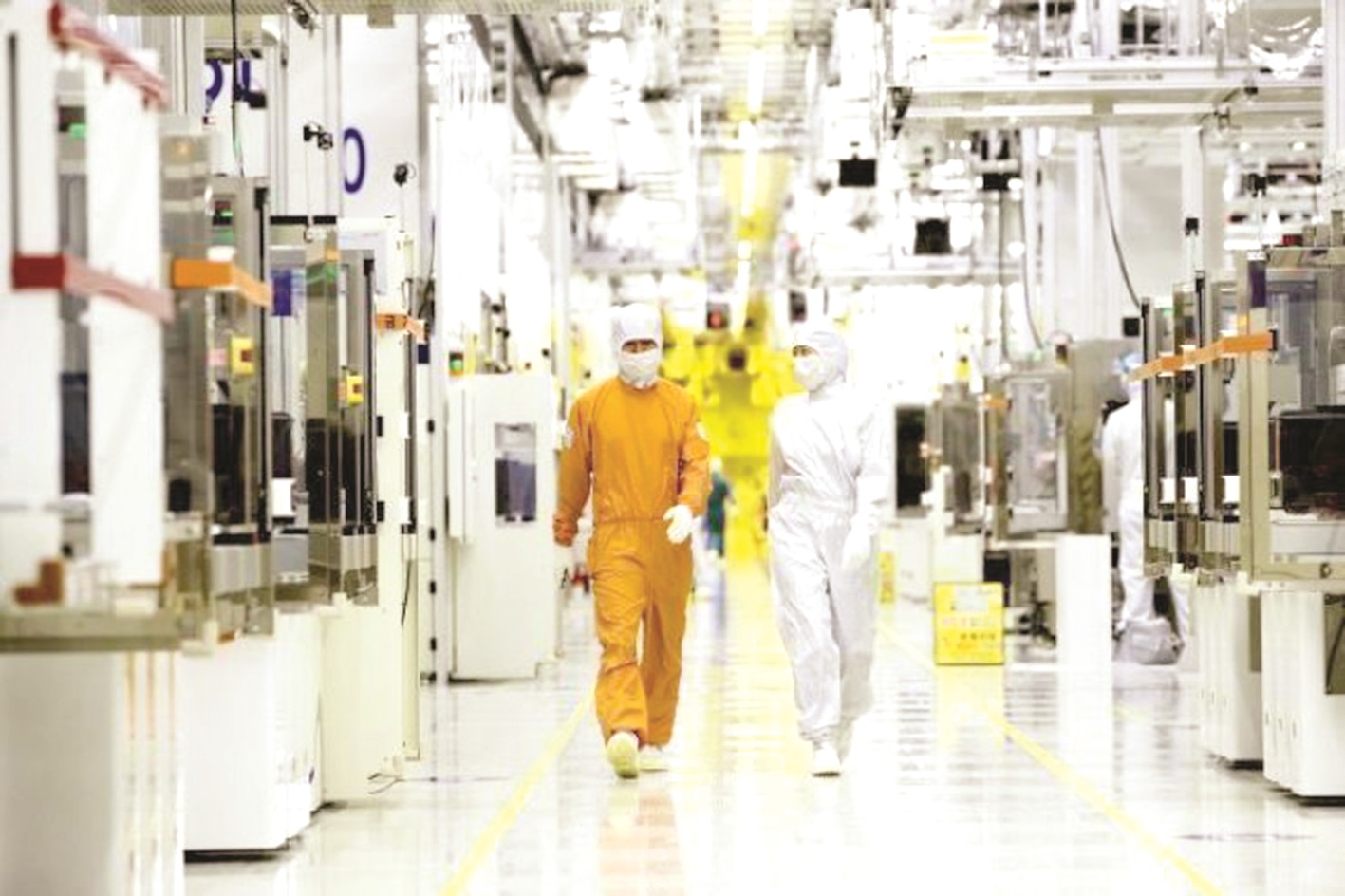Samsung stays top chipmaker vs Intel
Published on: Tuesday, September 20, 2022
By: Bernama
 Workers at a Samsung Electronics semiconductor manufacturing plant. (Samsung Electronics)
Workers at a Samsung Electronics semiconductor manufacturing plant. (Samsung Electronics)
SEOUL: Samsung Electronics Co. expanded its market share of the global semiconductor industry in the second quarter, maintaining its top spot, a research showed Monday.Samsung’s chip revenue for the April-June period came in at a record quarterly high of US$20.3 billion on the back of solid server demand, taking up 12.8 per cent of the global total of US$158.1 billion, reported Yonhap citing research firm Omdia.
ADVERTISEMENT
Samsung’s Q2 share was slightly up from the 12.5 per cent it logged the previous quarter.
In the second quarter, Intel’s market share decreased to 9.4 per cent from 11.1 per cent the previous quarter. The US chipmaker reported US$14.8 billion in revenue, down 16.6 per cent on-quarter.
Samsung and Intel have been locked in a fierce rivalry for many years.
In 2017, Samsung surpassed Intel as the world’s biggest chipmaker by revenue for the first time, and it maintained the spot for two years in a row.
ADVERTISEMENT
Intel overtook Samsung in 2019 and remained at the top until 2020, before it was beaten by Samsung again last year.
Meanwhile, SK hynix ranked No 3 with a 6.8 per cent market share for the three months ending in June, followed by Qualcomm with 5.9 per cent, Micron with 5.2 per cent, Broadcom with 4.2 per cent, Nvidia with 3.6 per cent and MediaTek with 3.3 per cent.
ADVERTISEMENT
Seven out of the global top 10 semiconductor companies were American.
On the banking sector, savings banks in South Korea saw their combined net profit decline 15.1 per cent year-on-year in the first half despite increased interest income as they set aside more loan loss reserves amid heightened economic uncertainty, data showed Monday.
Yonhap reported the combined net income of 79 savings banks stood at 899.1 billion won (US$649.2 million) in the January-June period, down from a net profit of 1.06 trillion won the previous year, according to the preliminary data from the Financial Supervisory Service (FSS).
The decline came as they set aside loan loss reserves more than they earned from customers’ interest payment, which has been on the rise in line with the central bank’s rate hikes to tame inflation.
The data showed that their loan loss reserves expanded 491 billion won year-on-year in the first half, while their interest income grew 481 billion won over the same period.
During the first half of this year, their total lending stood at 114.5 trillion won, up 13.9 per cent from six months earlier. Loans to households and businesses expanded 4.7 per cent and 20.2 per cent, respectively.
Those savings banks’ total assets were valued at 133.4 trillion won at the end of June, up 12.8 per cent from six months earlier, while their debt also increased 13.5 per cent over the same period to 119.9 trillion won. The data showed that those banks’ combined equity also rose 7 per cent to 13.5 trillion won.
Their loan delinquency ratio came to 2.6 per cent as of end-June, up 0.1 percentage point from end-December.
Their average capital adequacy ratio reached 12.88 per cent at the end of June, down 0.43 percentage point from six months earlier, the data showed.
It is still higher than a ratio of 8 per cent recommended by the Bank for International Settlements, an international organisation of central banks.
Stay up-to-date by following Daily Express’s Telegram channel.
Daily Express Malaysia










